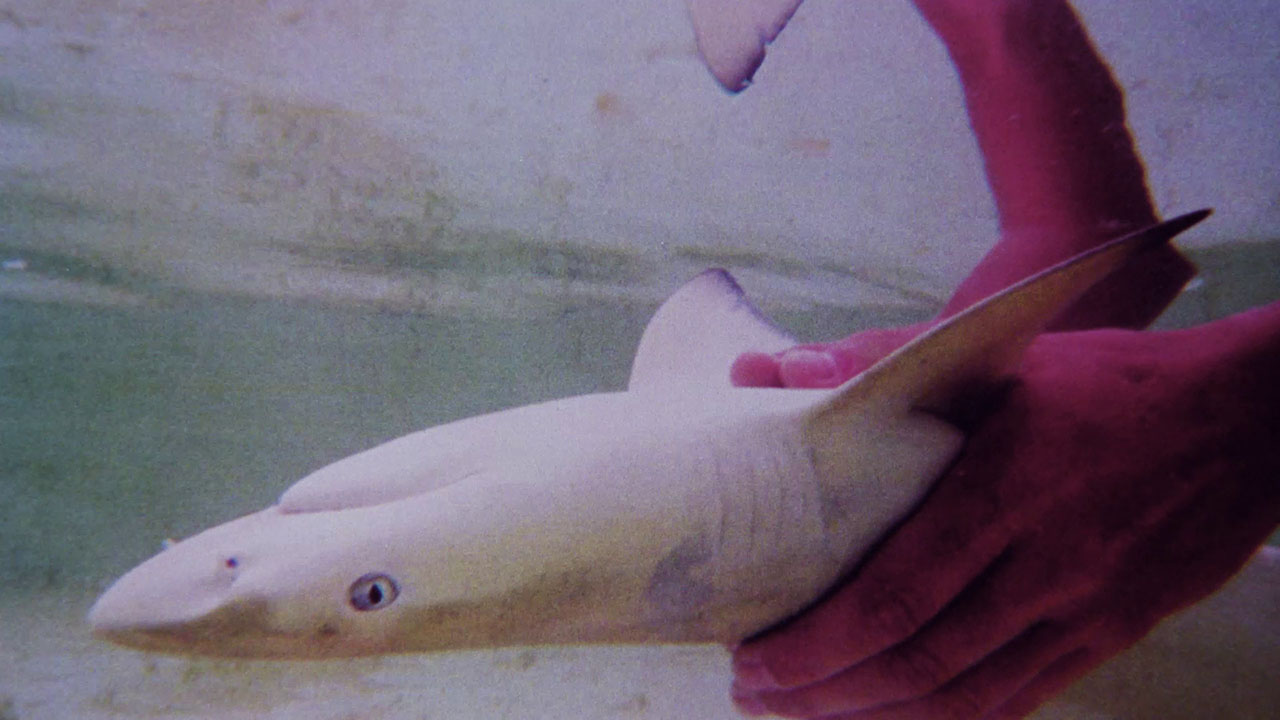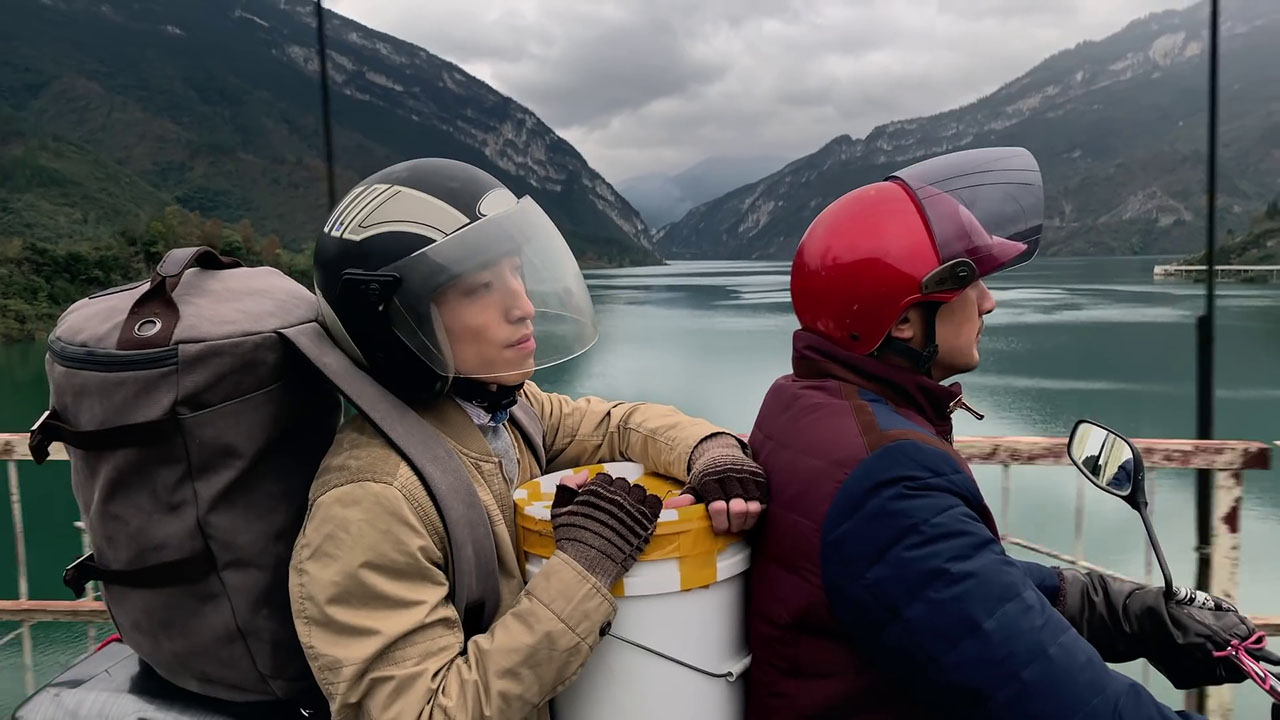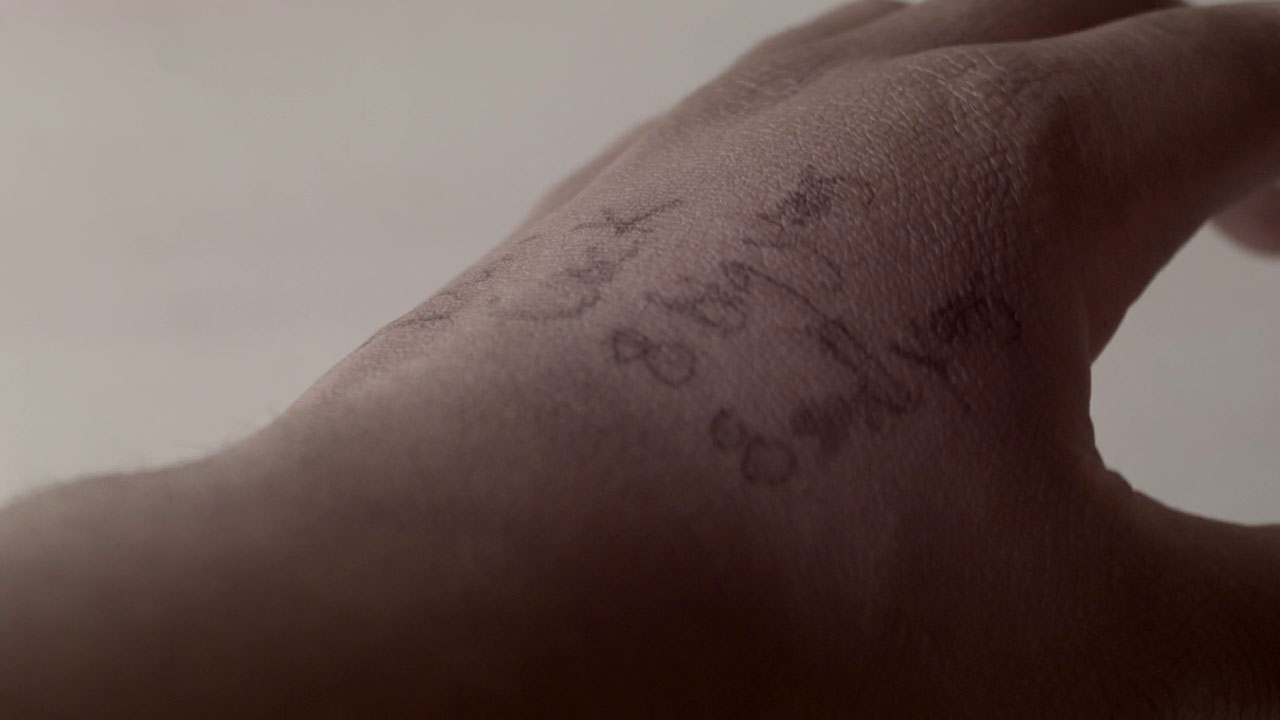Cityscape (2019, Michael Snow)
This looks and sounds great, I must remember to watch it often. Snow is up to his old tricks, the camera across the river from the Toronto skyline, tracking down then up (an almost-invisible cut in the water), left and right, a drumbeat soundtrack increasing in speed and intensity along with the camera, whipping back and forth, then slowing down and adding rotation into the mix, never going the full Centrale, staying on one axis at a time, finally spinning off in the sky.

–
Train Again (2021, Peter Tscherkassky)
Strobing between trains and horses, combining images so it looks like horse action is being projected onto the side of a train, or the train is the physical filmstrip. Then tracks-as-filmstrip, colliding into each other, always in motion. And this being Tscherkassky he shows the filmstrip itself sliding around, overlapping other images, displaying printed soundtrack and fetishizing sprocket holes. Some visual and sound segments are identifiably looped, some images inverted and posterized. Not sure why Danny bikes in from The Shining but it made me laugh to see him here. A theater audience is strobed against a parade of Lumiere films, then of course The Great Train Robbery appears. Screaming brakes and smash-ups dissolve into shards – I can’t tell if this is Evan Johnson-style digital melt or if my encoded copy just can’t keep up with the motion. The flicker on this thing must really be something in a theater. Closes with a Kren appreciation, the train rounding the bend, having survived history and catastrophe.


–
Log 0 (2019, Isiah Medina)
Silent but for one burst of rain, this feels like a random assemblage of things, daily life and filmmaking excerpts. I’d thought of the title as mathematical, but oh, it’s an activity log, like the little end-of-year videos I make but Medina-style. Towards the end piano music comes in and the shots get longer, and there’s somebody sketching some curves, so maybe it’s mathematical after all, or both.


–
Duck Duck (2019, Harmony Korine)
Dance-beat instagram-filter hot dog furries go on a gentle hotel-trashing rampage. My first Korine movie since Trash Humpers is under four minutes long and could’ve been a minute shorter, so I dunno how I feel about tackling the 95-minute The Beach Bum anytime soon. Description says this “exploring the emerging disciplines of wearable cinema, augmented reality, and spontaneous storytelling.”

–
White Echo (2019, Chloe Sevigny)
Kickass little movie about a group of women using a ouija board in an old house, a spirit following medium Kate Lyn Sheil home. Groovy music, too.


–
Point and Line to Plane (2020, Sofia Bohdanowicz)
Easily my favorite Bohdan/Campbell, dedicated to the memory of the two departed friends mentioned in the voiceover, so some truth in the story here. Ghosts and movement (fast horizontal camera pans) tie this to the other shorts watched today. Art (Hilma af Klimt) and color and patterns are discussed as DC travels to cities and museums, ruminating on two late friends.

–
La Chanson de PreÌvert (2021, Michel Gondry)
Apparent cutout animation of an autumn leaf that produces radical temporal effects on anything it touches, set to an upbeat French pop song. Tremendous.


–
Figure Minus Fact (2020, Mary Helena Clark)
Still frames at first. Bells and silence… insects and fishes. Not sure what it’s going for, but it’s in crisp HD and some of the images are very nice. There are numbered “figures” (demonstrating insects that blend in with plant life) but most figures are presented unnumbered, sans fact.


–
Nimic (2019, Yorgos Lanthimos)
The Lanthimos short with the great poster and music. Considering laying down my rock records and getting really into Britten and Ferrari, but I need to finish Tom Waits Mode first. A little movie with big music and camerawork, Matt Dillon happens upon a mimic (Daphne Patakia of Benedetta) on the subway, who replaces him in his home and profession. Mimicking Lanthimos’s usual cinematographer is Diego GarcÃa, who shot Cemetery of Splendor.
–
The Bucket (2019, Jia Zhangke)
Ohhh no, I was gonna say the music sounds like a TV ad, but this WAS a TV ad, a “shot on iPhone” promo about a guy traveling from the country to the city with a heavy bucket packed by his mom, which turns out to contain eggs from her farm packed in sand. Not gonna count this as a Jia film, just a paycheck, but at least there was bird tossing.

–
The Names Have Changed Including My Own (2019, Onyeka Igwe)
Archival slideshow, then british-accented narrator speaks of reading a book about her grandfather. Australian? A mother walks off with her infant twins. A darkened-stage dance routine, really nice photography. Discussion with her father or an uncle over a video version of the slave trade story featuring the grandfather. Facemask and hand sanitizer in a 2019 movie. A silent film is run and described in real-time but only the film reels and equipment are shown. Story of separated twins who reunite late in life. These threads run one after another, shorter and faster towards the end. The film about trains and the research family history in archival media really ties this nicely to the Tscherkassky and Bohdanowicz shorts.


–
The Return of Tragedy (2020, Bertrand Mandico)
“A smile is not a peaceful act, it’s a carnivorous statement.” In English and great color, Elina undead flying her internal organs like a kite while a cultist named Kate Bush confuses the cops. Scenario repeats with different details and results. The casio music and kooky weirdness recalls Quentin Dupieux. Yann Gonzalez also came to mind, or rather I was trying to remember if Mandico is the filmmaker who’s in M83, but no that’s Gonzalez, who is mentioned in the credits.

































































